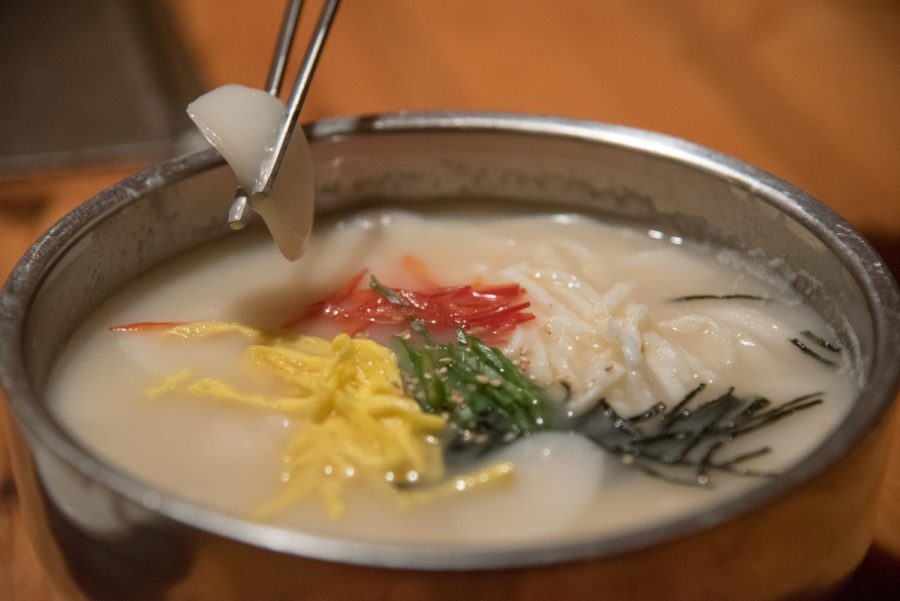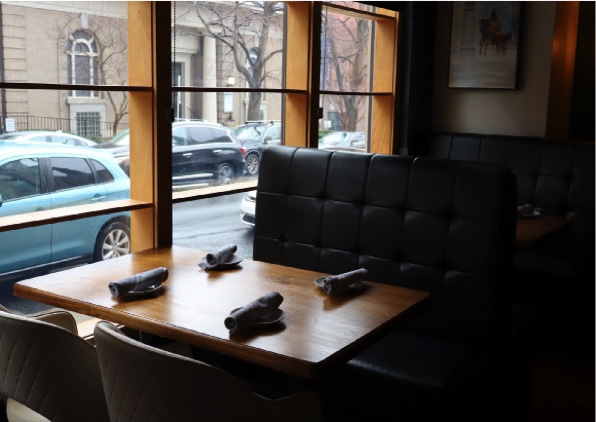Student reminisces about soul food
Joe described the memories and feelings associated with a Korean dish that’s close to his heart, tteokguk
February 22, 2021
In Pixar’s Ratatouille, Remy elegantly produces a dish called Tian Provençal — a modern interpretation of the traditional, rustic ratatouille stew — for the notorious food critic Anton Ego. As Ego reluctantly engages with the plate, the first bite not only melts his mouth but also brings to the surface a distant nostalgic memory from his past. He remembers the bittersweet moment when his mother prepares him a soothing, home-cooked ratatouille to cheer his sour mood. He tries to transport his consciousness back to the dinner table, but his jaw is stretched down to his scarf, the fountain pen, which he wields, surrenders to gravity and he succumbs to a stupor-like trance, not unlike a deer caught in headlights. A few seconds later, a hopeful smile is drawn across Anton’s austere face as he stabs for another bite.
Something about food can strike the souls of even the most stoic of the pack, and tug at the heartstrings of many. For me, that soul food is tteokguk (떡국). Americans have their classic chicken noodle soups; the Portuguese, their canorous caldo verdes; the French, their filling French onion soups; Japan, their rich ramens. Us Koreans? We have our time-honored tteokguks.
A comforting soul food that is ubiquitous in Seoul, South Korea (but obviously found throughout the country), this sliced rice cake soup is designed to warm the cockles of one’s heart and oozes with jubilee as it is primarily prepared during the celebration of Seollal, the Korean New Year. Devoted to lifting the spirits of many somber souls of the past year, this dish is not only a good pick-me-up meal, but it also serves as a hopeful reminder that a new prosperous year awaits for all who chow down on the ageless classic.
Tteokguks are broken down into two main components: the rice cake called tteok (떡) and the broth called guk (국). These soups are then garnished with an individual’s choice of julienne-cooked eggs, chopped scallions, bite-sized beef shanks (or other meats) and gim, which is a type of seaweed paper. These toppings are national treasures that bring good omens and good fortune to each doorstep of Koreans. The white, oblong shape of the tteoks represents purity and cleanliness while the broth — usually made with seafood stock or oxtail bone stock — serves as a hearty foundation. When combined together with the rice cakes, this amalgamation forms a unique gustatory harmony.
Aside from its cultural and spiritual significance, the reason why tteokguks are largely considered a highly coveted soul food is because of familial influences. Just like how Americans love to obsess over gargantuan roasted pigeons as the centerpiece of the dinner table on Thanksgiving Day, we Koreans love our tteokguks because we can share it with our families, first thing in the morning, at the start of the new year. Personally, this dish ranks at the top of my comfort food list because it has these factors of community and solace, which bolster the value of an already delectable meal.
Whenever I think of tteokguks, I immediately think of my mom and her wonderful cooking. Moreover, I think back to the times when my mom would often break tradition and cook tteokguks multiple times a year because it was an easy, inexpensive meal that got the whole family bundling up together at the dinner table and delighting at the presence of communion. Speaking of communion, sometimes my mom would prepare multiple, gigantic batches of broth and blanched rice cakes and serve them at our Korean church during Easter Sunday mass, or even on Christmas Day (my birthday)! Whatever the occasion, I have always been invested in her cooking process, sometimes so heavily that she makes me mind the mise en place and memorize her recipe.
Recently, Seollal fell on Feb. 12 (same as the Lunar New Year). I looked forward to having tteokguk with my family this year, but unfortunately, the timing and the distance proved to be troublesome. And although I’m immensely grateful, I’ve experienced a little bit of homesickness. However, hopefully, as the years pass by, I too can pass on this time-honored tradition to future generations, so that the comfort of home-cooked meals, especially the ones made with love and care like tteokguk, may steep their lives in joy and embolden their souls.























